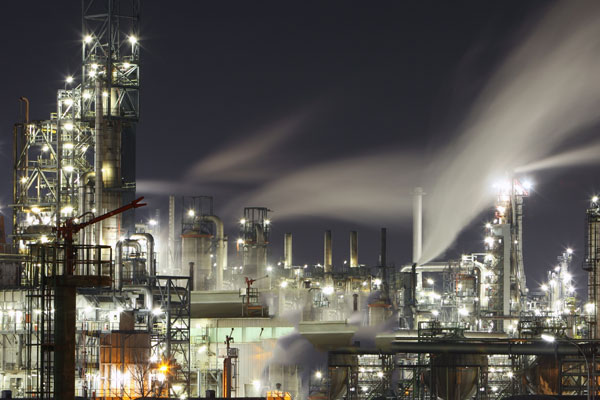
The Evolution of Pipeline Leak Detection
Pipeline leak detection is important for ensuring maximum operational performance and regulatory compliance. In addition, pipelines are essential for moving the world’s most crucial commodities in today’s energy-intensive climate. Pipelines have been recognized as the safest means of transporting oil and gas, thanks partly to improved construction and welding processes and ongoing advancements in leak detection technology.
According to the Economic Times, pipelines transport around 50 percent of all petroleum and crude products. With millions of kilometers of auxiliary oil and gas pipelines and pipe networks covering INDIA, pipeline leak detection systems (LDS) are critical for ensuring that all goods are delivered safely, on time, and with the least amount of environmental impact feasible.
Internal pipeline leak detection systems are classified into 4 subcategories:
Monitoring pipelines has never been easier.
You either operate onshore or offshore liquid and gas pipelines. With or without instruments, keep an eye on all regions. Simplify and accelerate processes and tasks that are critical for the safe conveyance of your goods. Rapidly and consistently detect leaks. In multi-product pipelines, track scrapers and batches. Determine the presence of deposits and difficulties with instruments. Improve your operations by gaining new knowledge.
STOPLEAKLOSS software protects you from the dangers of transporting various liquids and gases of various compositions, such as crude oil, natural gas, NGL, petrochemical products, chemical products, carbon dioxide, hydrogen, oxygen, nitrogen, water, and many others.
Modeling Real-Time Transients | Pipeline leak detection
The digital twin of your pipeline, Uses cutting-edge simulation technologies to see what happens inside your pipelines in real-time. Thousands of virtual sensors and meters are made available to deliver very accurate data every second. Determine the source of changing conditions. Immediately notice all of the impacts of the operator’s activities. Combine the RTTM with additional apps to increase preventative analytics and maintenance, leak detection, and product tracking, among other things.
Mechanism to Find Leaks
Sensitive. Reliable. Accurate. Robust. People and the environment must both be protected. Reduce financial and property damage. Pipeline leaks and ruptures must be detected and located as soon as possible. Use a single method or combine several methods to create a powerful system that operates well in various operating settings. As part of your safety activities, include an LDS that meets or exceeds international and industry standards.
Monitoring and Data Analysis
Prevent incidents before they occur. Measure the efficiency of your pipelines continuously and identify deposits. Optimize energy consumption and find cost-effective pigging frequencies. Detect drift, anomalies, and failures of your instrumentation as fast as possible. Maintain pipeline safety and extend the lifetime of your infrastructure. Get necessary guidance to act purposefully following operational and safety procedures.
Data Analysis and Monitoring
Prevent mishaps from occurring. Continuously assess your pipeline’s efficiency and look for deposits. Find cost-effective pigging frequency and optimize energy use. Detect your instrumentation’s drift, anomalies, and malfunctions as soon as feasible. Ensure pipeline safety and infrastructure longevity. Get the statistics you need to make informed decisions in compliance with operational and safety rules.
Visual leak detection systems are the most successful of the four approaches because they demand direct human engagement, which reduces the risk of missing leaks or damage. But unfortunately, it is also the most costly method for the same reason.
The Extended Real-Time Transient Model, a more advanced pipeline leak detection system version, has been developed (E-RTTM). E-RTTM uses leak pattern detection and computational pipeline monitoring technology to monitor and protect pipelines, long or short, in real-time from the possibility of leak and damage. First, the flow profile of the pipeline is calculated using measurable conditions such as flow, pressure, temperature, and density.
Next, e-RTTM assists in determining the varied pressure points and temperatures in the pipeline’s inlets and outlets, integrating them in real-time with a central monitoring system and establishing a standard for determining acceptable operating conditions. The information can help detect leaks, theft, damage, and other irregularities.
Advanced pipeline leak detection systems, such as IoT-based Remote Monitoring Systems, have evolved due to recent advancements in IoT and cloud-based technology. Pipeline operators can use this to detect pipeline breaches in real-time, pinpoint the cause, dispatch resources to manage the leaks, and track progress without experiencing any delays. A remote monitoring system based on the Internet of Things can be quite useful because it allows you to do things like:
- Loss reduction
- The nature and scope of the leak are updated in real-time.
- Regular upkeep
- Corrosion and abrasion of pipelines are being tracked.
- Protecting the company’s reputation by preventing damage to people and property both inside and outside the company.
Pipeline leak detection systems have changed dramatically from their past incarnations in this age of smart technology and the digital revolution. If your firm wants to enhance its pipeline leak detection system, you’ll need to hire a high-performing staff to offer you the resources and tools to manage and monitor your pipeline as effectively as possible. Who better to look after your pipeline and its requirements than StopLeakLoss, the leading IoT and cloud-based monitoring system supplier.
STOPLEAKLOSS can give you the newest cutting-edge technology in pipeline management and real-time monitoring of its operation, thanks to integrated control systems that manage transport, infrastructure, and projects all at once. In addition, STOPLEAKLOSS can help you deploy a pipeline leak detection system in your firm. Contact us today to speak with one of our specialists and receive a free quote.



